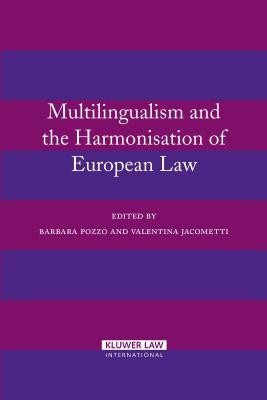
- We will send in 10–14 business days.
- Publisher: Kluwer Law International
- Year: 2008
- Pages: 219
- ISBN-10: 9041125329
- ISBN-13: 9789041125323
- Format: 16.8 x 24.4 x 1.8 cm, hardcover
- Language: English
- SAVE -10% with code: EXTRA
Multilingualism and the Harmonisation of European Law (e-book) (used book) | bookbook.eu
Reviews
Description
As European lawyers dealing with cross-border issues quickly learn, the terms contract, contrat, and contratto signify three very different legal concepts. This illustration highlights the importance of studying the relationships between language and law, particularly in the context of strong pressure from the European Community to harmonise the laws of the Member States a process which appears difficult, if not impossible, unless there is an understanding of the profound differences which exist between the various legal systems, and the development of a common European legal language from the 21 official languages now a feature of the European Union. This admirable collection of essays brings together the work of practitioners and scholars in three fields pertinent to this endeavour: representatives of Community institutions who are involved in drafting, translating, and interpreting multilingual texts; jurists and comparative lawyers from both civil law and common law systems; and researchers in linguistics and language issues. Among the many relevant matters they discuss are the following:
- terminologies of rights and remedies; the role of the European Court of Justice as interpreter; multilingualism in parliamentary practice; the role of the European Commissions legal revisers; and translation at the European Court of Justice.
EXTRA 10 % discount with code: EXTRA
The promotion ends in 18d.13:25:32
The discount code is valid when purchasing from 10 €. Discounts do not stack.
- Publisher: Kluwer Law International
- Year: 2008
- Pages: 219
- ISBN-10: 9041125329
- ISBN-13: 9789041125323
- Format: 16.8 x 24.4 x 1.8 cm, hardcover
- Language: English English
As European lawyers dealing with cross-border issues quickly learn, the terms contract, contrat, and contratto signify three very different legal concepts. This illustration highlights the importance of studying the relationships between language and law, particularly in the context of strong pressure from the European Community to harmonise the laws of the Member States a process which appears difficult, if not impossible, unless there is an understanding of the profound differences which exist between the various legal systems, and the development of a common European legal language from the 21 official languages now a feature of the European Union. This admirable collection of essays brings together the work of practitioners and scholars in three fields pertinent to this endeavour: representatives of Community institutions who are involved in drafting, translating, and interpreting multilingual texts; jurists and comparative lawyers from both civil law and common law systems; and researchers in linguistics and language issues. Among the many relevant matters they discuss are the following:
- terminologies of rights and remedies; the role of the European Court of Justice as interpreter; multilingualism in parliamentary practice; the role of the European Commissions legal revisers; and translation at the European Court of Justice.


Reviews